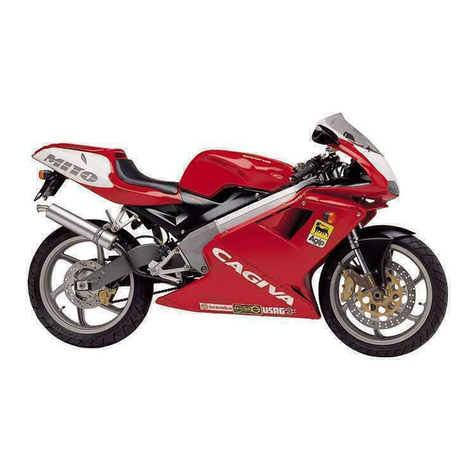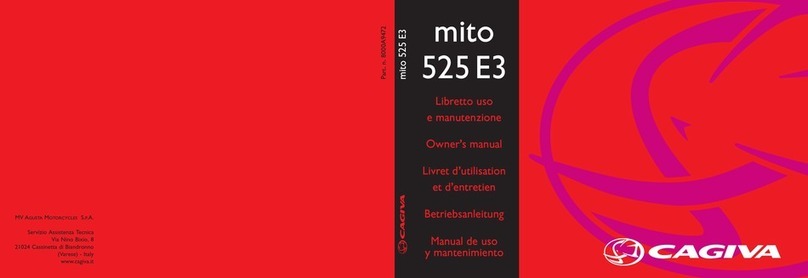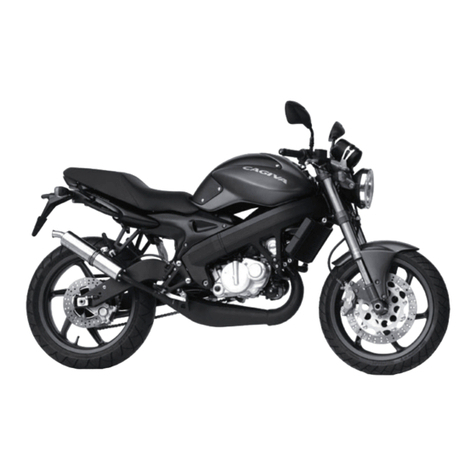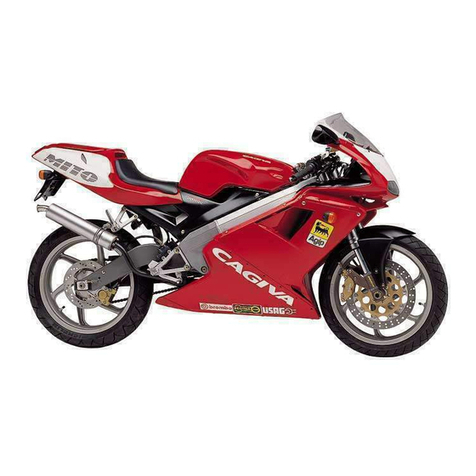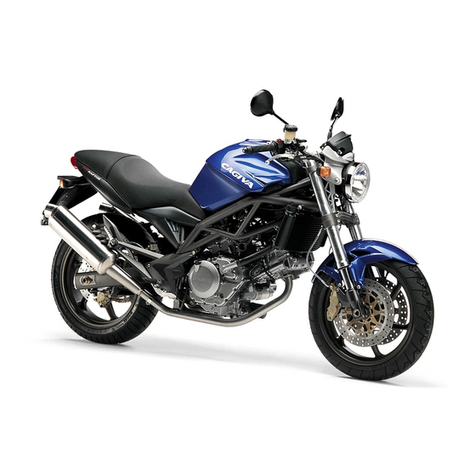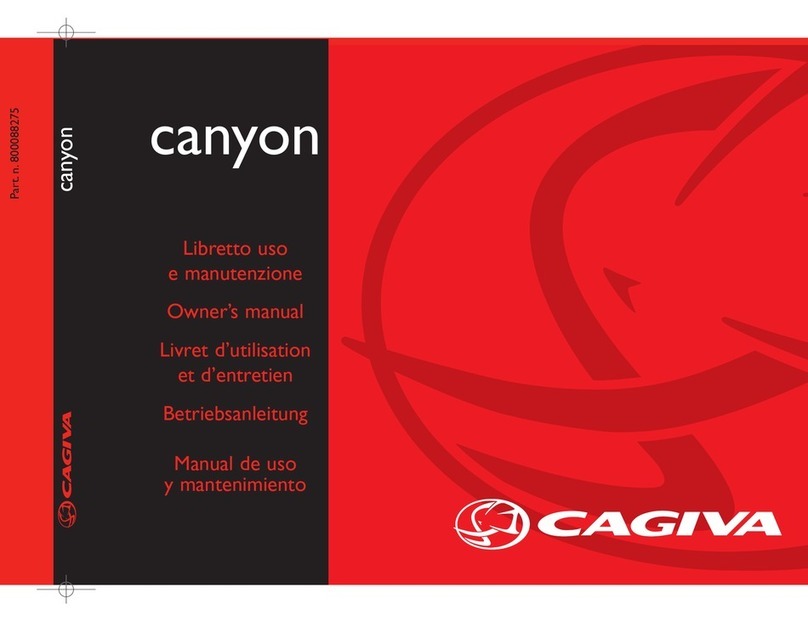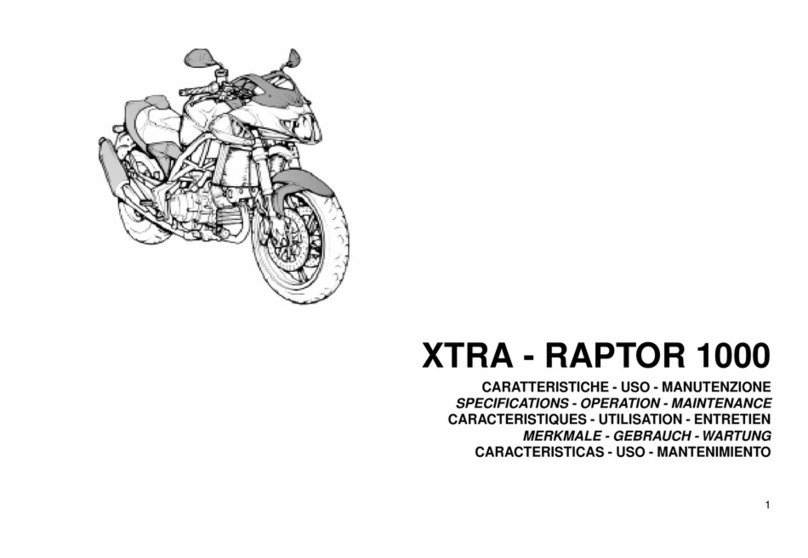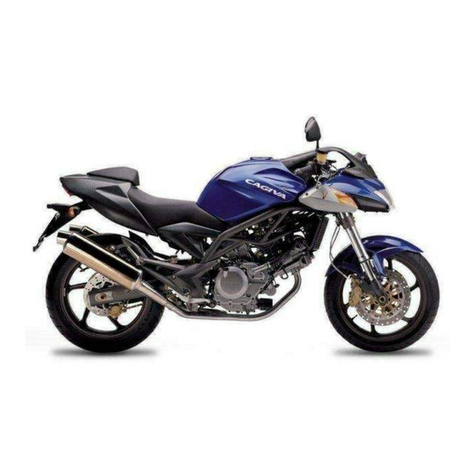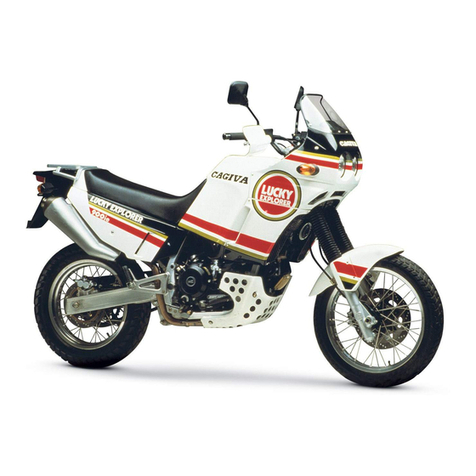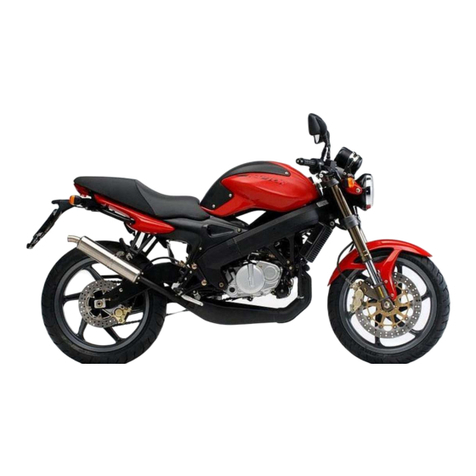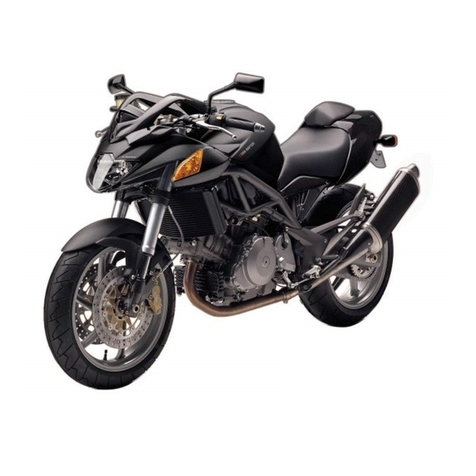A.4
GENERAL INFORMATION
FRAME
Type ........................................................................................... Rectangular and square box section tubular framework
in highly resistant steel with box-type strengthening
supports at the fork fulcrum attachment.
FRONT SUSPENSION
Type ........................................................................................... Conventional advanced pivot hydraulic telescopic fork
with45mmdiametertubes.Telescopicmovement150mm.
Steering angle ............................................................................ 32° (left and right)
Steering head angle ................................................................... 25°
Trail ............................................................................................ 110 mm
REAR SUSPENSION
Type ............................................................................................Single hydraulic shock absorber progressively damped
with external pre-load adjustment of the spring and
extensionofthehydraulicbrakingeffect.Wheeltravel160mm.
WHEELS AND BRAKES
Front brake................................................................................. Twin disc
Rear brake ................................................................................. Single disc
Front tyre.................................................................................... Metzeler ME Z4 C – 110/80 – 18”
Rear tyre .................................................................................... Metzeler ME Z4 – 150/70 – 17”
ELECTRICAL SYSTEM
Transistorised electronic ignition
Ignition phase............................................................................. 3° before T.D.C. at 1300 rpm
Spark plugs ................................................................................ NGK CR8EK or DENSO U24ETR
Battery........................................................................................ 12v 10Ah
Generator ................................................................................... Three phase AC generator
Fuses ......................................................................................... 30/30/15/15/15/10/10A
Headlight unit ............................................................................. Main beam: condenser halogen bulb H1 12v-55w
Dipped beam: polyellipsoidal bulb H3 12v-55w
Sidelight ..................................................................................... 12v 5w
Direction indicators..................................................................... 12v 10w
Number plate light ...................................................................... 12v 5w
Brake/tail light............................................................................. 12v 21/5w
INSTRUMENT PANEL
Instrument bulb .......................................................................... 12V 1.2W
Warning lights ............................................................................ 12V 2W
FUEL/OIL/COOLANT/FORK OIL CAPACITY
Fuel tank ..................................................................................... 20 L
Engine oil: oil change .................................................................. 3100 ml
oil change with filter ................................................ 3300 ml
overhaul .................................................................. 3600 ml
Engine coolant ............................................................................ 2000 ml
Fork oil (each tube) ..................................................................... 680 ml


